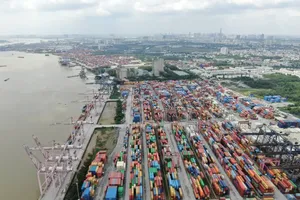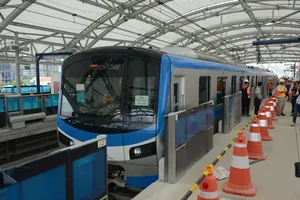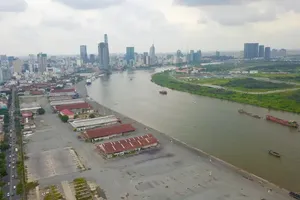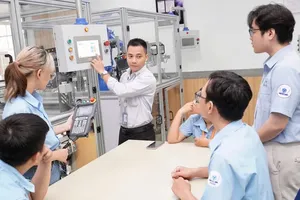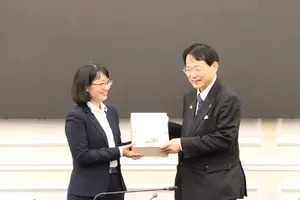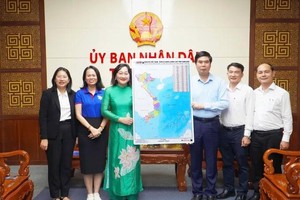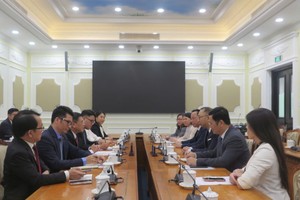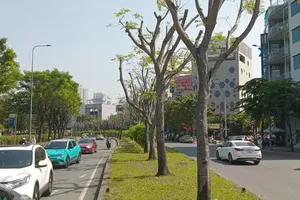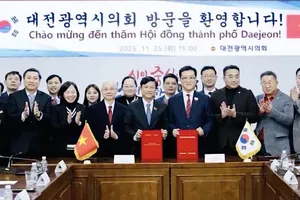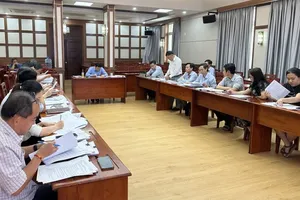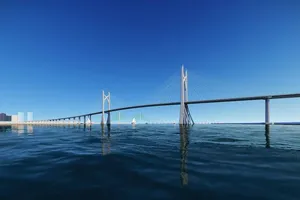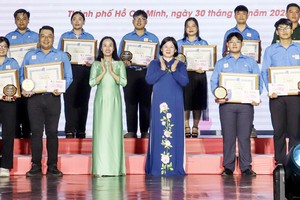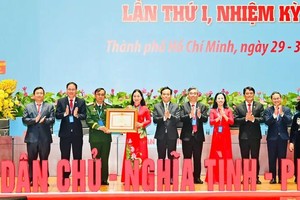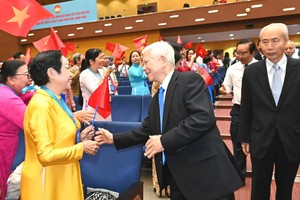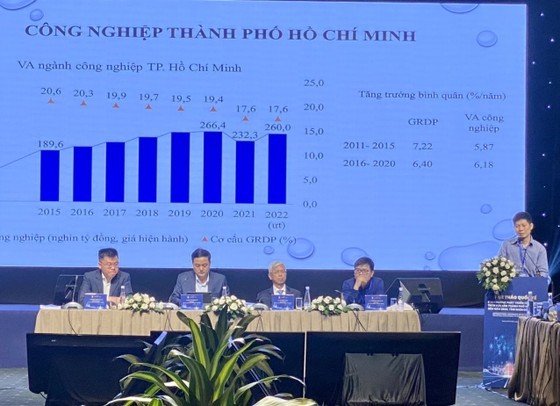 |
At the event. (Photo: SGGP) |
Ho Chi Minh City, as a major industrial center, has made a significant contribution to the industrial development of Vietnam. However, there has been a gradual decrease in the proportion of HCMC's industry in the country's overall industrial structure. To sustain the growth momentum of the city's industry, it is necessary to undertake a transformation. This is why the People's Committee of HCMC organized the international conference "Orientation for Industrial Development in HCMC until 2030, with a Vision to 2050" on April 26.
Many bottlenecks in industrial development
In his opening remarks, Mr. Vo Van Hoan, Vice Chairman of the People's Committee of HCMC, emphasized that a sustainable economy relies on a robust manufacturing industry that meets consumer needs and reduces dependence on external sources. While HCMC is striving for modern and high-tech development, it is clear that the city's manufacturing sector is still struggling with labor-intensive and low-value-added operations. To transform industrial production, there must be a shift in the mindset and actions of leaders at all levels, as well as the business community and citizens of the city.
Several experts have highlighted five key challenges facing the industrial sector in HCMC.
Firstly, the overall industry growth rate has been sluggish. In 2010, the city's industrial sector contributed 15.38% to the country's industrial value-added, but this figure declined to 8.7% in 2021.
Secondly, the investment, production, and business environment remain insufficient. The city's Provincial Competitiveness Index (PCI) has consistently decreased, falling from 4th place in 2014 to 27th place in 2022.
Thirdly, the pace of industrial restructuring in HCMC has been slow. Although the contribution of high-tech industries to the value-added has increased, it still falls short of the national average. Moreover, four key industries have yet to make a breakthrough in the city's industrial development. Most industrial enterprises have small-scale operations, low technological capabilities, limited competitiveness, and are unable to meet the requirements of participating in the global production network. HCMC also lacks a prominent, directional, and leading industrial sector or enterprise.
Fourthly, the distribution structure of industrial space is dispersed and does not effectively utilize the city's competitive advantages. Despite a period of development, the system of industrial parks and clusters has revealed numerous limitations and unsustainable conditions, impeding the city's space for urban development, services, and other economic sectors.
Fifthly, the linkages in industrial production development remain loose. Collaboration among institutions, schools, and enterprises in research and development activities, education, and training is weak. Additionally, cooperation, production, and supply between domestic and FDI enterprises are limited. Regional linkages in industrial development are ineffective and underdeveloped. The industrial cluster model has not been developed yet and has not promoted production along the value chain and supply chain, especially at stages with high technology content and added value.
Synchronized solutions are required
In light of this, Mr. Nguyen Manh Linh from the Research Institute of Strategy and Policy of Industry and Trade at the Ministry of Industry and Trade has suggested five solutions that the city must implement synchronously to enhance the industry's capacity.
The first solution is to continue improving the business and investment environment by enhancing the Provincial Competitiveness Index and creating a favorable, stable, and transparent investment, industrial production, and business environment by accelerating the digitization of administrative procedures and improving the efficiency of governance and public administration at the provincial level (as measured by the PAPI).
Regarding investment attraction, a focus should be placed on both investors and the industrial production sector, with priority given to high-tech industries, high-tech application industries, projects with added value, and high spillover effects.
Secondly, the city should accelerate industrial restructuring, and shift the growth model towards the application of science, technology, innovation, and digital transformation, fully leveraging the opportunities of the Fourth Industrial Revolution and the city's advantages.
Resources should be identified and focused on developing high-tech industrial products, key industries, and supporting industries to create motivation and spillover effects for the development of other industries and economic sectors. In addition, the industrial development space should be restructured to improve land use efficiency and industrial infrastructure should be developed in harmony with transport and social infrastructure.
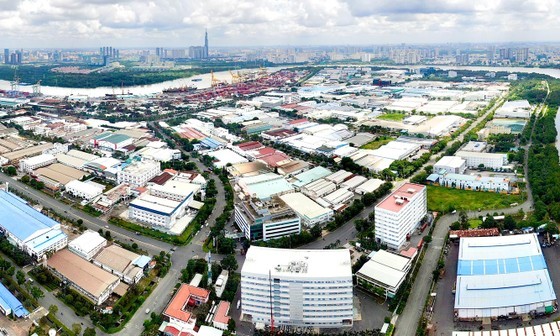 |
Tan Thuan export processing zone in District 7, HCMC (Photo: SGGP) |
Thirdly, it is important to strengthen activities that support and enhance the capacity of businesses, which can be achieved by researching and innovating incentive policies that support businesses to improve their competitiveness, meet international standards, and actively participate in the global production network.
Aside from that, businesses should be supported to accelerate their digital transformation, automation, and environmentally-friendly production activities, capitalizing on the achievements of the Fourth Industrial Revolution. It is also necessary to develop a system of industrial production support services, particularly for high-tech industrial production and the application of high-tech industries.
Fourthly, the city should promote linkages in industrial production by organizing activities to connect and strengthen information exchange between institutes, universities, and businesses, as well as between domestic and foreign companies. Additionally, it is important to develop and establish industry linkages, expand value chains and supply chains in key industries, and promote intra-regional and inter-regional linkages in industrial development, with HCMC acting as a nucleus for regional development.
Fifthly, the city should prioritize scientific and technological research and innovation as key drivers for fast, sustainable, and inclusive industrial development, innovate policies, create a favorable environment for research and development activities, and invest in industrial human resource training. To accomplish this, it is crucial to improve the quality of universities, vocational training institutions, and research institutes.
Additionally, businesses should be encouraged to invest in innovation, absorption, and mastery of technology, especially core technology, source technology, and digital technology. To foster innovation and creativity, it is essential to establish an innovation and creativity zone with the city's high-tech park as its center. Priority should be given to the development of technology and business incubators, particularly in high-tech and innovative fields.



